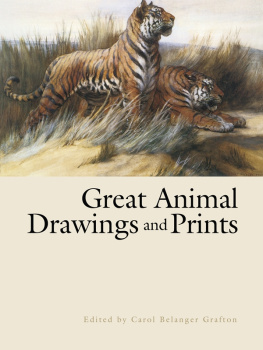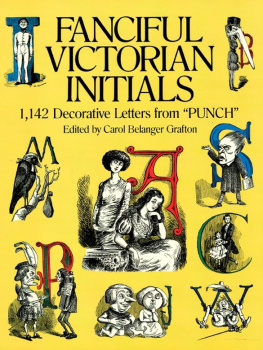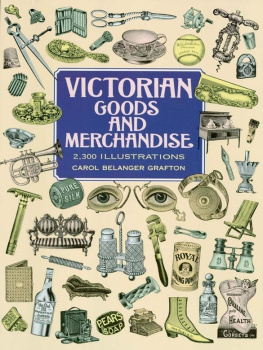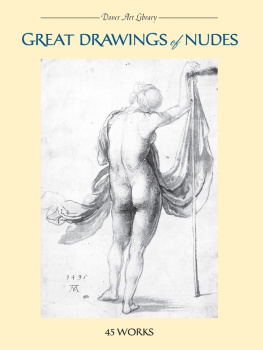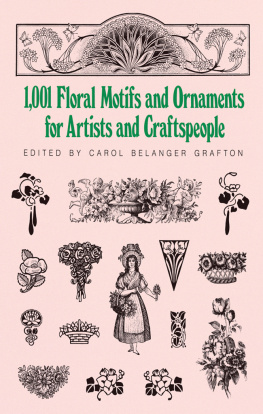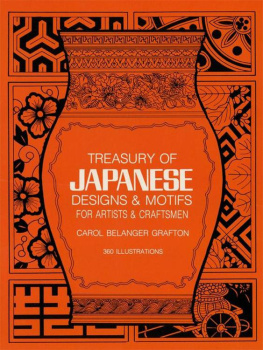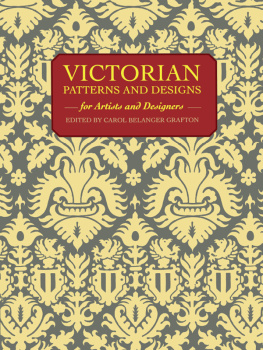
VICTORIAN
IMAGERY & DESIGN
THE ESSENTIAL REFERENCE
CAROL BELANGER GRAFTON
DOVER PUBLICATIONS, INC.
MINEOLA NEW YORK
The source of frontispiece and chapter opener images is
William Morris wallpaper designs

Copyright
Copyright 2015 by Dover Publications, Inc.
All rights reserved.
Bibliographical Note
Victorian Imagery and Design: The Essential Reference, first published by Dover Publications, Inc., in 2015, is a new compilation of images reprinted from authoritative sources. For detailed source information see page 151.
Library of Congress Cataloging-in-Publication Data
Grafton, Carol Belanger, compiler.
Victorian imagery and design : the essential reference / Carol Belanger Grafton.
p. cm.
eISBN-13: 978-0-486-80918-2
1. Decoration and ornamentVictorian styleThemes, motives. I. Title.
NK1378.G745 2015
745.40941'09034dc23
2015029877
Manufactured in the United States by RR Donnelley
79984001 2015
www.doverpublications.com
INTRODUCTION
Alexandrina Victoria, the daughter of Prince Edward, Duke of Kent and Strathearn, was born on May 24, 1819, and became Queen of England at the age of eighteen on June 20, 1837, following the death of her uncle. She reigned as Queen for sixty-three years and seven months, until her death on January 22, 1901. Partly, no doubt, because she ruled so long, the image that survives of Victoria is not of the lively young woman who was a talented artist and diarist who took a genuine interest in the international and domestic politics of her day. Her image, instead, is one of time standing stillthe ancient, unhappy-looking Queen, wearing black as she always did following her husband Alberts death to typhoid fever in 1861, the Queen who never smiled and whose expression seems never to change. Actually, the era to which she gave her name was one of great change in every sphere of human life. The changes that the Victorian era brought to the worlds of art, design, and graphic style and technique were no less dramatic than those that occurred in every other area, including politics, culture, industry, and warfare. Here, as elsewhere, the world that Queen Victoria departed in 1901, in the second year of the twentieth century, was very different from the world she entered in 1819, with Napoleon in captivity and the French Revolution a recent, living memory.
Two great rivers of information flowed into Victorias world to create the Victorian style, one from around the world, civilized and not, and the other from an ever more mysterious place: the past. The British had collected antiquities for centuries, but the process expanded geometrically in England after the defeat of the French in Egypt early in the nineteenth century. Ancient Egyptian, Greek, Roman, and Etruscan artifacts, as well as sculpture and statuary, paintings, vases, jewelry, and weapons, flooded into London in those years, including the Rosetta Stone and the Elgin Marbles. Shipments of Assyrian and Babylonian artifacts arrived from the Near East, followed by material from Africa as the continent was opened up by generations of English and European explorers. Etruscan, Pompeian, Byzantine, and Moorish materials joined relics and artwork from India, China, Japan, and the rest of Asia. Few stones were left unturned.
By the third quarter of the nineteenth century it was possible to study design traditions from every corner of the world in great detail without leaving London. Designs were copied from actual artifacts, and the first English books and periodicals devoted to these exotic traditions were published. The word got out. When British architect Owen Jones published his classic reference work, The Grammar of Ornament, in 1856, plates were included of designs and motifs carefully rendered from all of these cultures and more. Over a century and a half later, The Grammar of Ornament is still considered a definitive and supremely useful reference source. Jones would have had no possible way of compiling this material in any century before the one in which he lived. It was certainly the first great Information Age, and the eclectic nature of Victorian stylea classical border here, a Persian motif there, a little touch of China to add interestwas one of the inevitable results.
While explorers, military men, and geographers and other scientists were bringing source materials for the study of ancient and now newly discovered design traditions from around the world to Europe and England, other kinds of explorers were looking deeply into Englands and Europes own ancient history for other influences that would also define Victorian style. The Victorians enthusiastically discovered Englands medieval past and the study of the style and decoration of illuminated manuscripts and the building and ornamentation of churches and other medieval structures took a place in the Victorian style book alongside Renaissance, Baroque, and Rococo influences and the more recent classicism of the eighteenth century. Anything that had a history and a pedigreeElizabethan ceiling patterns, Italianate ironwork, Flemish tiles, Louis XIV furniturewas part of the Victorian mix, and Victorian design reflected the blending of these many influences. Border designs, for example, often harked back to the influence of medieval illuminated manuscripts, which were just then, in the Victorian era, being collected, treasured, and studied in a serious way for the first time. In the Victorian borders included in this book, you can see traces of the medieval world: here and there, peeking out from behind the abundant and beautifully drawn vegetation, are the faces of gods and goddesses, trysting lovers, angels with wings, and fantastic creatures, dragons, and monsters right out of the fourteenth century.
Possibly because of the explosion of information with which the Victorians worked, there is the inescapable feeling that it must have seemed crucial to elaborate as much as possible, to fill every blank spot, to ornament every corner and surface. But with all the clutter, Victorian design also meant precision and exact detail, perfect symmetries and geometric exactness. Above all it was a hugely successful blending of styles, the inheritance of neoclassicism with its delicate, fine lines and openness, flowing fabrics and decorated columns, and, as the century wore on, an overlay of medieval, gothic, and various foreign influences, an explosion of patterns and styles and colors. The designs could be complicated, but always revealed precise lines, symmetry, and balance. No matter how complex, everything was always under control, the proportions were right, the elements worked together, everything in its placeeven the face of a gargoyle or the coiled body of a serpent that would be perfectly at home in a modern apocalyptic graphic novel seems, in the pen work of these Victorian craftsmen, to belong precisely wherever it is found.
What really made this Essential Reference possible was the tremendous publishing explosion of the Victorian erahundreds of periodicals and thousands of books on every subject, many illustrated via the quintessential nineteenth-century form, the wood engraving. Its possible for us, a century later, to see in wonderful detail what the Victorian world looked like, from the iconic wood-engraved snapshots of Dors London, A Pilgrimage, to the wood engravings in thousands of Victorian book and periodical fiction illustrations, to the catalogues of popular culture, the immense Art-Journal record of
Next page

